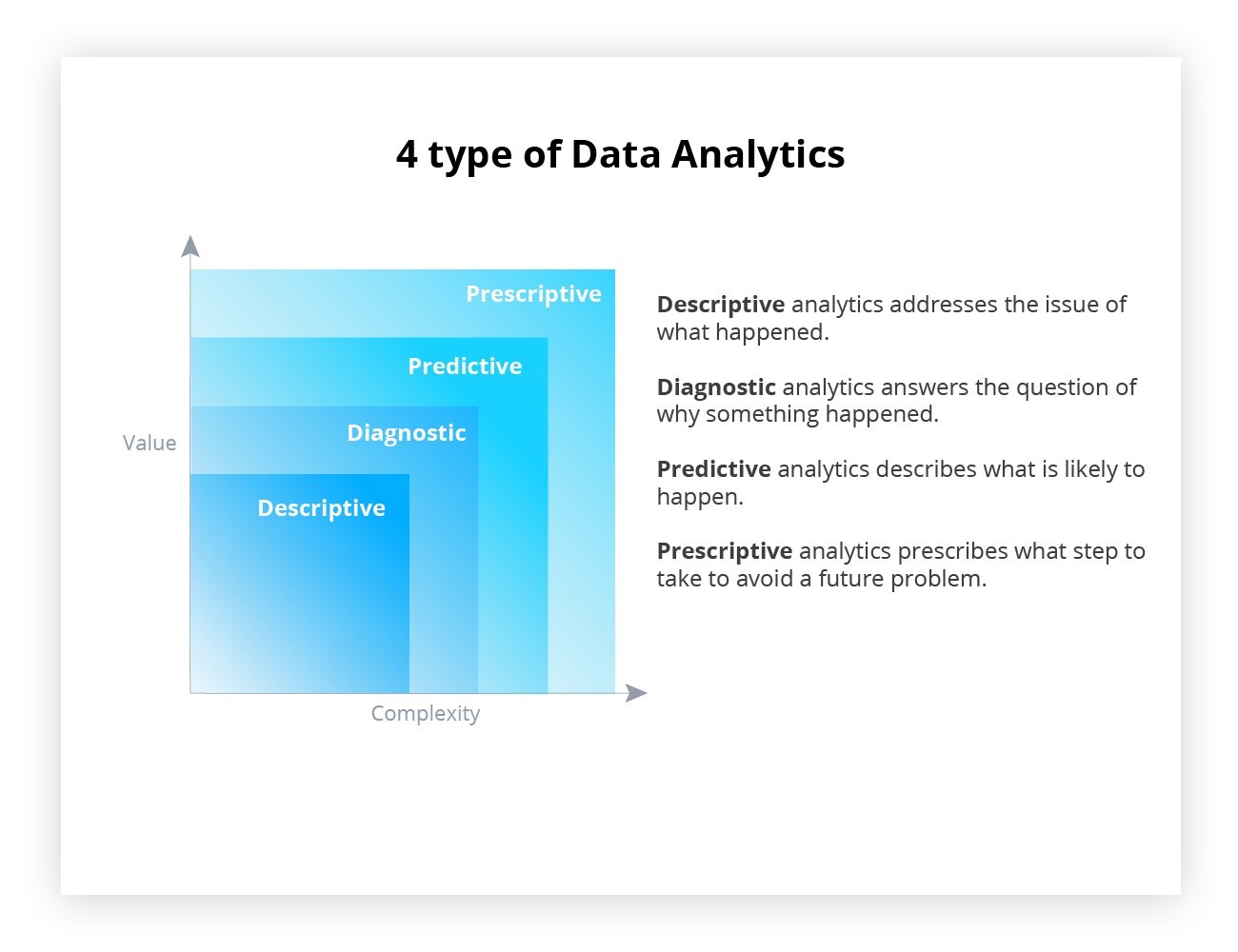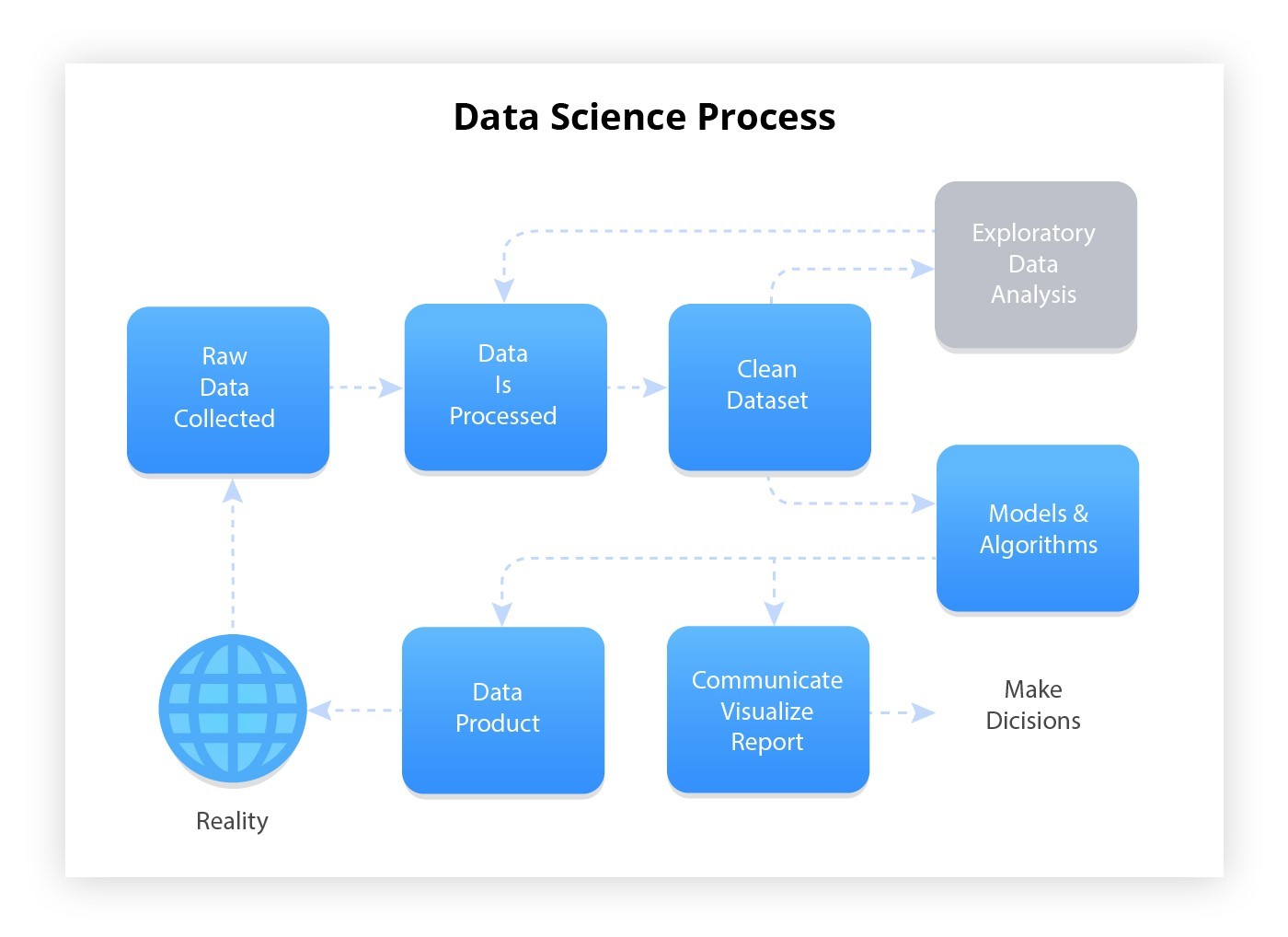Things You Should Know About Types Of Data Analysis

There is no such thing as smooth sailing in business. It’s constant learning and re-adjusting to new trends and challenges. To be successful in business, we need to understand what is happening, what was happening and what might happen in the future. That’s where we can learn great lessons from the study of analytics and its types.
Let’s study some necessary types of data analysis methods and their respective use and examine one chunk at a time. First, we’ll delve into the discussion of “big data.”
The Importance of “Big Data”
Big data is one of the misconceived and mistreated words in today’s market. Yet, with more clarity on how to apply big data to business intelligence, you can better maneuver between the ins and outs of big data while learning how to tap into the vast resources of big data analytics.
Big data is best understood by the three essential factors:
-
-
volume (to handle big sets of data more easily);
-
-
-
velocity (to view the speed of data flowing in and out for a better analysis);
-
-
variety (to sort out the types of data sources for a better assimilation).
Having big data and the ability to correctly analyze it can aid your company in discovering underlying patterns and interconnections between different sets of data. Big data draws its resources from ample sources and multiple transactions.
Now we will overview four cornerstone types of data analysis. We will start with the most basic type and go up to more complex ones.

1. Descriptive Analytics – “Describes” Things
Descriptive analytics addresses the issue of what happened. It is a glimpse into the past. It’s descriptive as it describes the things that took place. It takes a glance at data and analyzes the previous events and situations to gain insight on how to become more efficient.
Descriptive analytics shuffles raw data from numerous pools of data to glean valuable insights from the past. However, this data indicates that something is right or wrong, without explaining the reason for its existence. Google Analytics is an excellent example of descriptive analytics. Every person who creates a new website can benefit significantly from detailed data it provides about users and traffic channels for optimization and better sales results.
Highly data-driven companies aren’t content to access data from merely descriptive analytics but are eager to combine information with other kinds of data analysis, such as diagnostic analytics.
2. Diagnostic Analytics – “Diagnoses The Issues”
At this level, past data is compared to the answer to the question of why something happened. Diagnostic analytics helps companies drill down to the cause to see the emerging patterns and have a more insightful understanding of a particular issue. For example, a healthcare facility contrasts patients’ response to an advertising campaign in different parts of the country; a retailer carefully examines the sales down to subcategories.
Another example could be a social media promotional campaign, which can use diagnostic analytics to evaluate the number of posts, followers, comments, etc. A single summary perspective of thousands of online notices helps to see which of your previous campaigns was productive and which wasn’t.
Modern solutions for diagnostic analytics must include the machine learning approach to supplement the analysts. Machines are more adept at discovering patterns, finding anomalies, surveying “atypical” events, and detecting driving forces behind Key Performance Indicators (KPIs). The latter feature is necessary for appropriating multifaceted analytical techniques, which can be selected from a folder of algorithms. All of it is done to determine cause-effect links and find out independent and unique variables that can be used by businesses to elicit more influence.

Enhanced by machine learning, diagnostic analytics assists with avoiding unconscious bias and misreading of causation factors. Yet today’s diagnostic analytics must still be governed by people. Just as machines can be used to help reduce the bias in human decision making, so should people be used to contextualize the outputs of machine decision making.
IDC predicts that by 2021, 25% of big companies will have augmented data analysts with data ethnographers to contextually interpret data through high-quality research methodology that reveals people’s inner core as emotions, personal stories, and outlook on the world.
Diagnostic analytics that is grounded in the mix of artificial intelligence (AI), machine learning and the high-profile expert knowledge of people could possibly bring us nearer to answering the question: Why did it happen? When you are aware of why then you can step ahead to address the issue: What in the world will transpire next?
3. Predictive Analytics – “Predicts” Future Possibilities
Predictive analytics describes what is likely to happen. It uses the discoveries of descriptive and diagnostic analytics for finding tendencies and predicting future trends. The focal point of predictive analytics is an application of statistical models for predictive forecasting or classification.
Despite various benefits that predictive analytics brings, it’s crucial to remember that forecasting is simply an approximation. The accuracy of predicting depends highly on the data quality and stability of the situation, therefore it demands a careful re-visiting and on-going optimization.
Due to predictive analytics and the proactive methods it provides, a telecom company, for instance, can identify those subscribers who are most probable to reduce their spending and set in motion particular promotional activities to fix the previous errors. A management team can assess the risks of investments in their company’s further development given income analysis and forecasting.
Some companies have been able to utilize predictive analytics for the sales process from A to Z, measuring lead generation, the number of interactions, types of messaging, social media, documentation, CRM information, etc. Adequately adjusted predictive analytics can be employed to leverage sales, boost marketing, and other types of advanced forecasts.
Predictive machine learning helps to assess credit risk. It can be used as follows: customer’s past financial history is checked to predict their possible economic activity. Likewise, predictive analytics can be of good use in measuring sales peaks and valleys, for example, to compartmentalize customers by their product preferability and sales cycle.
4. Prescriptive Analytics – “Prescribes” The Right Course of Action
The goal of prescriptive analytics is to prescribe what steps to take to avoid a future problem or to appropriate the full potential for an emerging trend. This type of data analytics requires not only gathering of authentic information but also necessitates accumulation of external data based on the essence of statistical algorithms.
Prescriptive analytics uses complex tools and innovations, such as machine learning, business tenets, and calculations, which make it hard to execute and oversee the whole statistical process.
Consequently, before opting to adopt prescriptive analytics, a company should analyze essential endeavors vs. a conceivable added value. It’s sort of laser-focus to address specific issues.
For example, in healthcare services, you can better supervise the patient population using prescriptive analytics to estimate the number of patients who are suffering from obesity. Then, with the help of such filtering factors as sugar diabetes, you can make up your mind on where to focus the treatment. A similar prescriptive pattern could be applied by almost any target group.
What are the examples of the explicit use of prescriptive analytics? They range from a healthcare facility that is able to access the data about the number of patients hospitalized last year to a wholesaler who can get an insider’s perspective on the average revenue due to the stats.
Specifically speaking, the healthcare industry is, without over-exaggeration, the number one industry which is already benefiting from prescriptive analytics. For instance, obesity is a real plague and doctors are able to get an insider’s perspective on the patient population using prescriptive analytics.
The way it works: now doctors can monitor the exact number of people who are clinically obese. Next, they supplement their research by applying specific filters. One such filter is a sugar diabetes factor which in conjunction with LDL (low-density lipoprotein) cholesterol amount can help a doctor to predetermine where to conduct treatment. The same prescriptive model can be applied to almost any industry target group or problem.
The prescriptive analytics continues to lend a helping hand for the industry of self-driving cars. To make such a vehicle, one needs a lot of diverse data processed in one system (from moving pedestrians to the geometry of buildings).
So far we have looked at the main types of data analysis. But there is a whole host of other types that could be of benefit to your business. Let’s examine at least three of them.
Other types of analysis
Among different types of analysis that help to accumulate and sort the data out, we will particularly touch on the time series analysis, exploratory data analysis, and inferential analysis.
Time Series Analysis
In practically every scientific area, measurements are conducted over time. These observations lead to a data collection of organized data known as time series. Time series data analysis is the procedure of prototyping and explicating time series of data points. The objective is to elicit all significant information (statistics, tenets, and patterns) based on the shape of data.
A well-known example of a time series is the daily value rate of a stock market index. Consequently, the information is used to create prediction models that are able to predict future changes.

Exploratory Data Analysis
There are the following subdivisions of data analysis: descriptive statistics, exploratory data analysis (EDA), and confirmatory data analysis (CDA). EDA scrutinizes newly-discovered features in the data sequence while CDA addresses the truthfulness or falsehood of current theories.
There is a whole data science process with several stages:

Once a set of data is cleaned, it can be analyzed. Analysts may apply exploratory data analysis as one of many techniques for analyzing data. They do it to better understand the messages enclosed in the data. The procedure of exploration may result in additional data cleaning or further requests for data, so this process may be repetitive in nature.
Inferential Analysis
The inferential analysis uses statistical tests to see whether an observed pattern is a random sample of data. Or perhaps it takes place because of some intervention effects from the side.
Researchers often use inferential analysis to determine if there is a correlation between an intervention and a result. They also examine the strength of that correlation. For instance, inferential statisticians try to infer from the data what the population might think about this or that politician (that could be handy before upcoming elections).
Thus, the inferential analysis is used to make inferences from data to more general conditions.
To sum up
There are many types of data analytics which companies can freely choose from. It all depends on what kind of business needs they might have or how genuinely they want to immerse themselves in data analysis. While descriptive and diagnostic analytics allow for a reactive approach, predictive and prescriptive analytics help to make users proactive.
The types of data analysis methods are just a tip of an iceberg of the whole data management picture. There are so many more other elements such as data architecture and modeling, data collection tools, data mapping and integration, business intelligence, etc.
Ultimately, data may be your most prized possession. The selection of the right methods of data analysis might be crucial leverage for your overall business development, so choose wisely!
Content created by our partner, Onix-systems.
 Home
Home